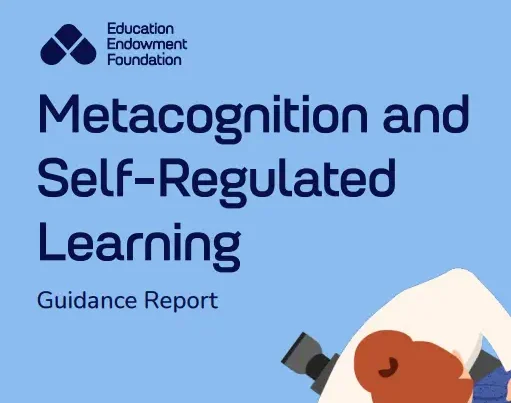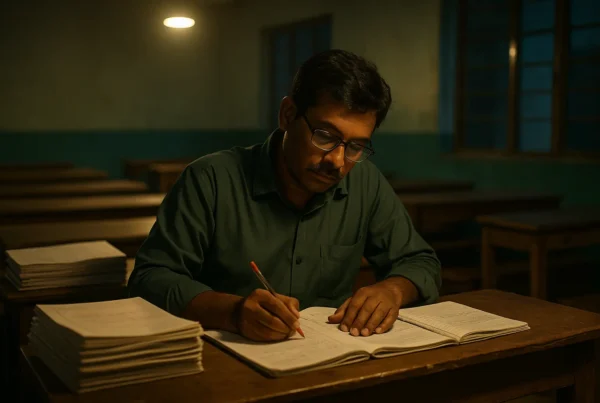Think back to your own school days. We all remember that one great teacher—the one who made ideas click, who inspired us to push further. And perhaps we also remember the other kind: lessons that dragged, confusion that never cleared, classrooms where learning felt impossible.
So what’s the difference? Are some people simply born to teach, or is great teaching something we can all learn?
The evidence says it’s not magic, and it’s not luck. As highlighted in What Makes Great Teaching? Review of the Underpinning Research (Coe, Aloisi, Higgins & Major, Sutton Trust, 2014), great teaching comes down to specific practices—habits of planning, explaining, questioning, and responding—that anyone can develop. And crucially, these aren’t about working harder or having endless resources. They’re about small, deliberate tweaks that make learning more effective for students.
Let’s look at five common challenges teachers face, what the research says about each, and how to turn those struggles into small wins in the classroom.
Problem 1: “They don’t understand, but I don’t know why.”
You explain a concept—fractions, photosynthesis, essay introductions—and blank faces stare back. You know the content, but you’re not sure what’s blocking them.
📖 What the evidence says
Great teaching isn’t just knowing the subject—it’s anticipating how students think about it, and where they’ll trip up. This is called pedagogical content knowledge. Without it, even strong subject experts miss the stumbling blocks.
✅ Small shifts you can try
-
Ask first. Before teaching a new topic, ask a quick prediction question: “Which is bigger, 1/3 or 1/4?” Note where they go wrong—then build your teaching around fixing that.
-
Share wisdom. Spend 10 minutes each week with colleagues swapping stories: “Where do your students usually get stuck in this chapter?” Build a bank of pitfalls and fixes.
-
Map the journey. Draw a simple diagram on the board linking today’s concept to what came before. Circle the tricky bits—students need to see where they might stumble.
Problem 2: “I talk and explain, but it doesn’t stick.”
You cover the syllabus, students nod along, but when you test them the next week—it’s gone.
📖 What the evidence says
Memory is strengthened not by listening once, but by constant checking, small steps, and active retrieval. Instruction works best when you break it down, model it, and get students practising right away.
✅ Small shifts you can try
-
Start with a review. Open every lesson with three quick recall questions from last week. Students’ brains switch back on—and you see instantly what’s been forgotten.
-
Show, then do. Don’t explain everything at once. Model one example on the board, then give students a near-identical one to try. Repeat the cycle.
-
Check everyone. In a class of 70, don’t rely on hands up. Use thumbs up/down, choral responses, or scrap paper “mini-whiteboards.” You’ll spot misunderstandings before they grow.
Problem 3: “Some students just give up.”
You see it in their faces: “Maths isn’t for me.” “I’ll never get English.” They stop trying before they start.
📖 What the evidence says
Students thrive when success is linked to effort, not “ability.” High expectations, combined with genuine care, create classrooms where persistence feels safe.
✅ Small shifts you can try
-
Praise the effort. Swap “You’re clever” for “I can see you worked hard to solve that.” Students learn that effort brings success.
-
Make expectations visible. Co-create three class rules like “We try,” “We listen,” “We help.” Post them on the wall and return to them often.
-
Build micro-successes. Break tasks into smaller steps so struggling students achieve wins. Each success fuels confidence to try the next step.
Problem 4: “They memorise today, but forget tomorrow.”
Students cram for the exam but can’t recall the knowledge later. You feel stuck between rushing forward and constantly reteaching.
📖 What the evidence says
Our brains forget quickly unless learning is revisited, mixed up, and retrieved. “Desirable difficulties” like spacing and interleaving feel harder, but make learning last.
✅ Small shifts you can try
-
Flashback Fridays. End the week with one question from last month’s unit. Just one—but it keeps old knowledge alive.
-
Mix the practice. Don’t give 10 problems of the same type. Mix fractions with percentages, or grammar with vocabulary. Students learn to choose strategies, not just repeat.
-
Mini-quizzes. Two or three retrieval questions at the start or end of class, no grades attached. The act of recall strengthens memory.
Problem 5: “I feel like I’m teaching alone.”
You’re trying your best, but without feedback or support it’s easy to stagnate—or worse, go backwards.
📖 What the evidence says
Teachers improve most when schools encourage reflection, feedback, and shared learning. Left in isolation, even experienced teachers can plateau or decline.
✅ Small shifts you can try
-
One change at a time. After each lesson, note one thing to tweak tomorrow: “Next time I’ll check answers with choral response.” Keep it focused and doable.
-
Swap and observe. Pair up with a colleague. Watch 10 minutes of each other’s teaching with one focus—say questioning. Share feedback that’s specific and kind.
-
Leaders as facilitators. If you’re in charge, carve out 20 minutes of staff meeting time for teachers to share what worked this week. Culture shifts start small.
Final Word
Great teachers aren’t born—they’re made. And the making doesn’t happen overnight. It’s the result of small, consistent tweaks, grounded in evidence.
-
Anticipate misconceptions.
-
Review and model in small steps.
-
Praise effort, not talent.
-
Make learning harder so it sticks.
-
Keep learning, together.
These are not giant reforms—they’re everyday practices within reach of every teacher, even in the busiest Bangladeshi classrooms.
So here’s the real question: what’s the one small change you’ll try this week?
If you found this useful, join the EBTD newsletter for monthly, research-backed tips, free classroom tools, and updates on our training in Bangladesh—no spam, just what helps. Sign up to the newsletter and please share this blog with colleagues or on your social channels so more teachers can benefit. Together we can improve outcomes and change lives
If you want to hear more of this in action — the stories, teacher voices, and extra examples — check out our podcast episode What Makes Great Teaching – Five Golden Nuggets on EBTD. The episode walks through the same key ideas: anticipating misconceptions, structuring instruction clearly, building positive classroom climates, using learning techniques like retrieval and spacing, and cultivating ongoing professional growth. It’s a useful companion: hearing how teachers apply these evidence-insights in real Bangladeshi classrooms can spark ideas for your own tweaks.
Bibliography
Coe, R., Aloisi, C., Higgins, S. & Major, L.E. (2014). What Makes Great Teaching? Review of the Underpinning Research. London: Sutton Trust. Available at: https://www.suttontrust.com/wp-content/uploads/2014/10/What-Makes-Great-Teaching-REPORT.pdf





